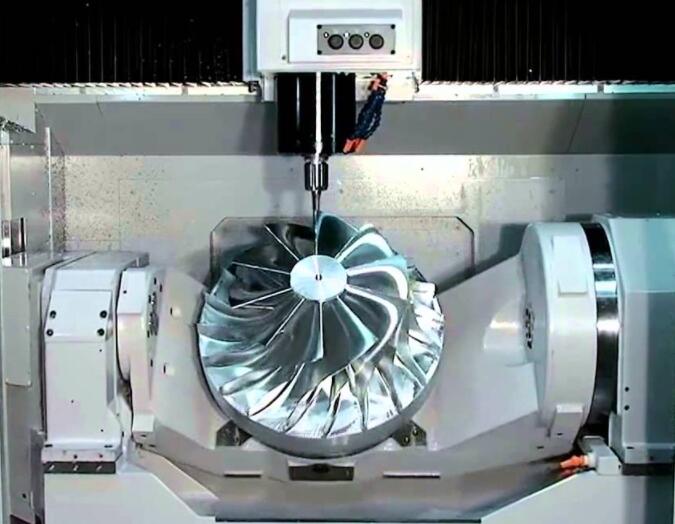A machining center is a kind of CNC machine tool. What is a CNC machining center? And what are the different types of machining centers? Today we’ll dive into its classification.

What is a Machine Tool?
Turning, milling, planing, grinding, boring, drilling, and more operations are all mechanical processing methods. Mechanical machining is to process metal blank parts into the required shape, with dimensional accuracy and geometric accuracy. The equipment that can complete the above functions is called machine tools. CNC machine tools are developed from ordinary machine tools.
After the machine tool is equipped with a numerical control system, the machine tool becomes a numerical control machine tool. The development of ordinary machine tools to CNC machine tools is not just as simple as adding systems. For example, from the development of milling machines to machining centers, the structure of machine tools has changed. The most important thing is to add tool libraries, which greatly improve the accuracy. The main functions of the machining center are milling, boring, and drilling. Generally speaking, numerical control equipment mainly refers to numerical control machine tools and machining centers. Generally speaking, a machining center is a kind of CNC machine tool.
What is CNC Machining Center?
A machining center is a CNC machine tool with a tool magazine, it can perform multi-process machining when the workpiece is clamped. A CNC machining center integrates the capabilities of a CNC milling machine, a CNC boring machine, and a CNC drilling machine. After the workpiece is clamped, the CNC system can control the machine tool to automatically select and replace tools according to different processes, automatically set tools, automatically change the spindle speed, feed rate, etc., and can complete various processes such as drilling, boring, milling, reaming, tapping, etc., in a continuous manner. Therefore, it effectively decreases the clamping time of workpieces, as well as the time of auxiliary processes such as measurement and machine tool adjustment, and is ideal for making parts with complex shapes and high precision requirements.
Types and Classifications of CNC Machining Centers
Machining centers can be classified into 3-axis, 4-axis, and 5-axis machining centers according to the number of axes:
1) 3-axis machining is still one of the most popular and widely used processing technologies. In 3-axis machining, the workpiece remains fixed, and the rotary cutter cuts along the x, y, and z axes. This is a relatively simple form of CNC machining, which can produce products with a simple structure. It is not suitable for processing complex geometric shapes or products with complex components. Since cutting can only be performed on three axes, the cutting speed may also be slower than that of four or five axes CNC, because the workpiece may need to be manually repositioned to obtain the desired shape.
2) On 4-axis machines, the fourth axis is added to the motion of the cutting tool, allowing it to rotate around the x-axis. There are now four axes — the x-axis, the y-axis, the z-axis, and the a-axis (rotation around the x-axis). Most four-axis CNC machines also allow the workpiece to rotate, which is called the b-axis, so that the machine can act as both a milling machine and a lathe. If you need to drill holes on the side of a part or on the surface of a cylinder, 4-axis NC machining is the best choice. It greatly speeds up the machining process and has high machining accuracy.
3) 5-axis CNC machining center has an additional axis of rotation compared to four axes CNC. The fifth axis rotates around the y-axis, also known as the b-axis. The workpiece can also rotate on some machines, sometimes called the b-axis or the c-axis. Due to the high universality of 5-axis NC machining, it can be used to manufacture complex precision parts, such as medical parts of artificial limbs or bones, aerospace parts, titanium parts, oil and gas mechanical parts, military products, etc.
Machining centers are classified according to the position of the workbench:
Machining centers are generally classified according to the relative position of the spindle and the workbench and are divided into horizontal, vertical and universal machining centers.
1) Horizontal machining center: it refers to the machining center whose spindle axis is parallel to the workbench, and is mainly used for machining box-type parts.
2) Vertical machining center: it refers to the machining center with the spindle axis perpendicular to the workbench, which is mainly used to process complex parts such as plates, discs, molds, and small shells.
3) Universal machining center refers to a machining center that can control linkage changes through the angle between the machining spindle axis and the rotary axis of the workbench to complete the machining of complex spatial surfaces. It is applicable to the machining of impeller rotors, mold, cutting tools, and other workpieces with complex spatial surfaces.